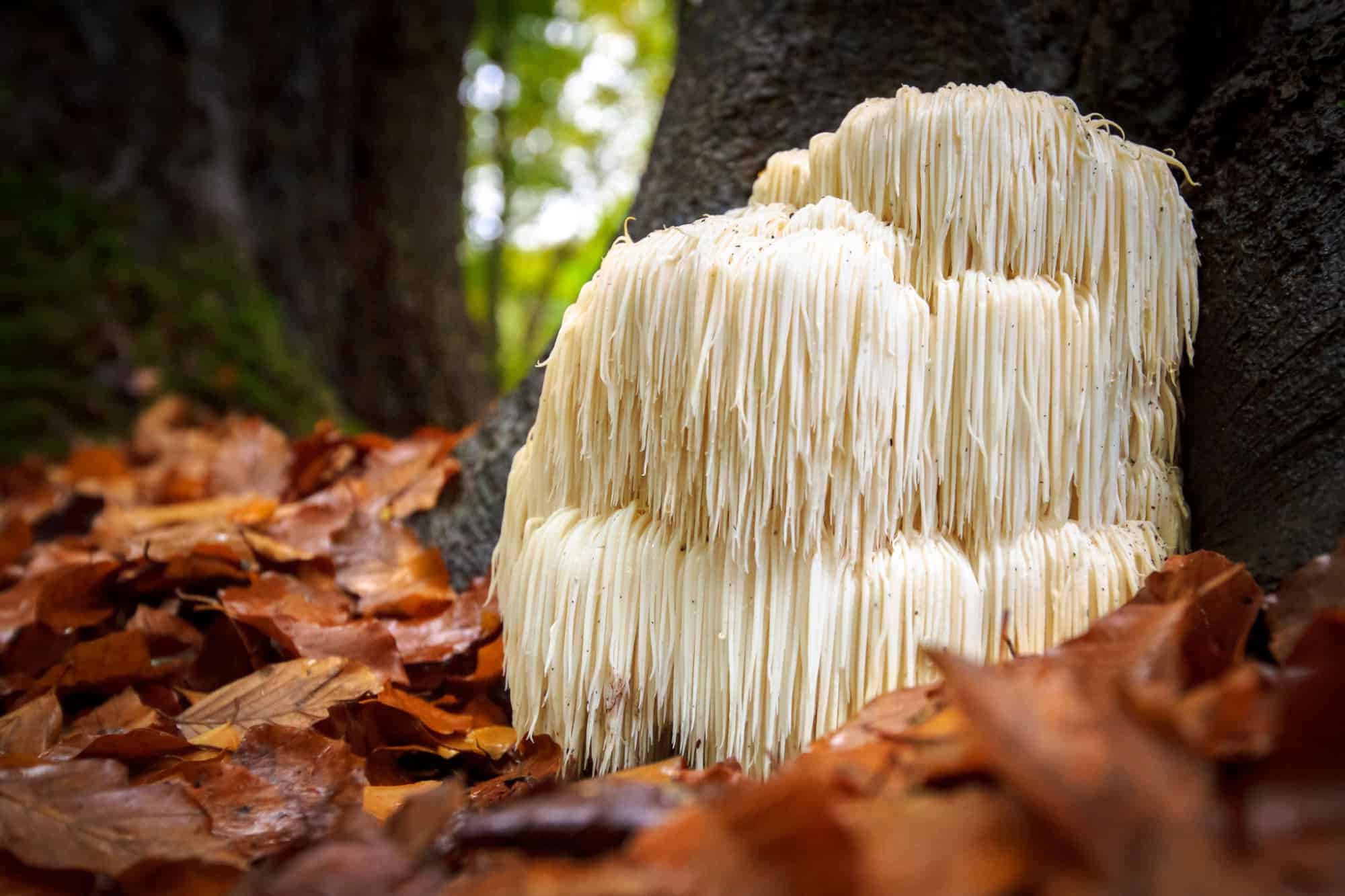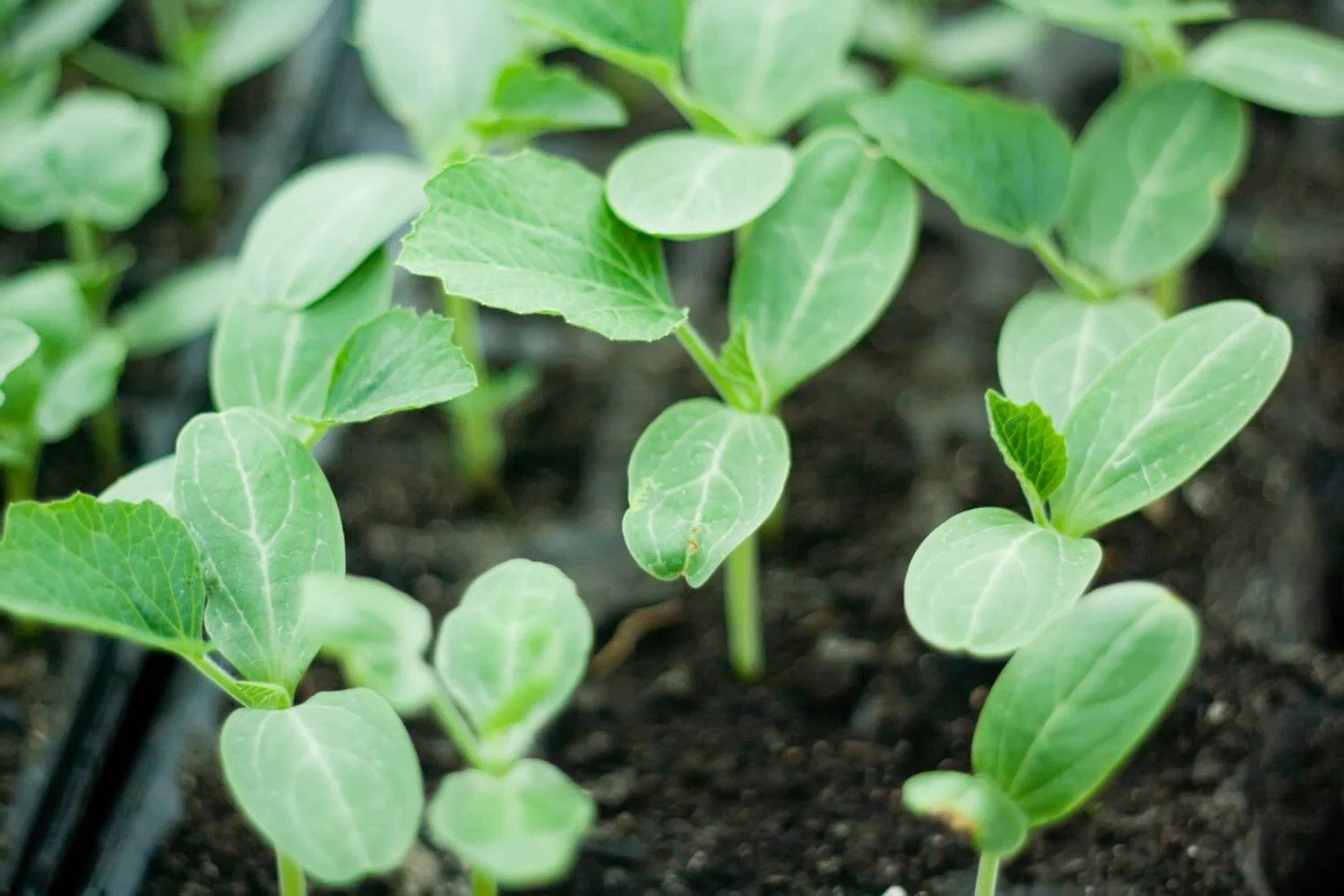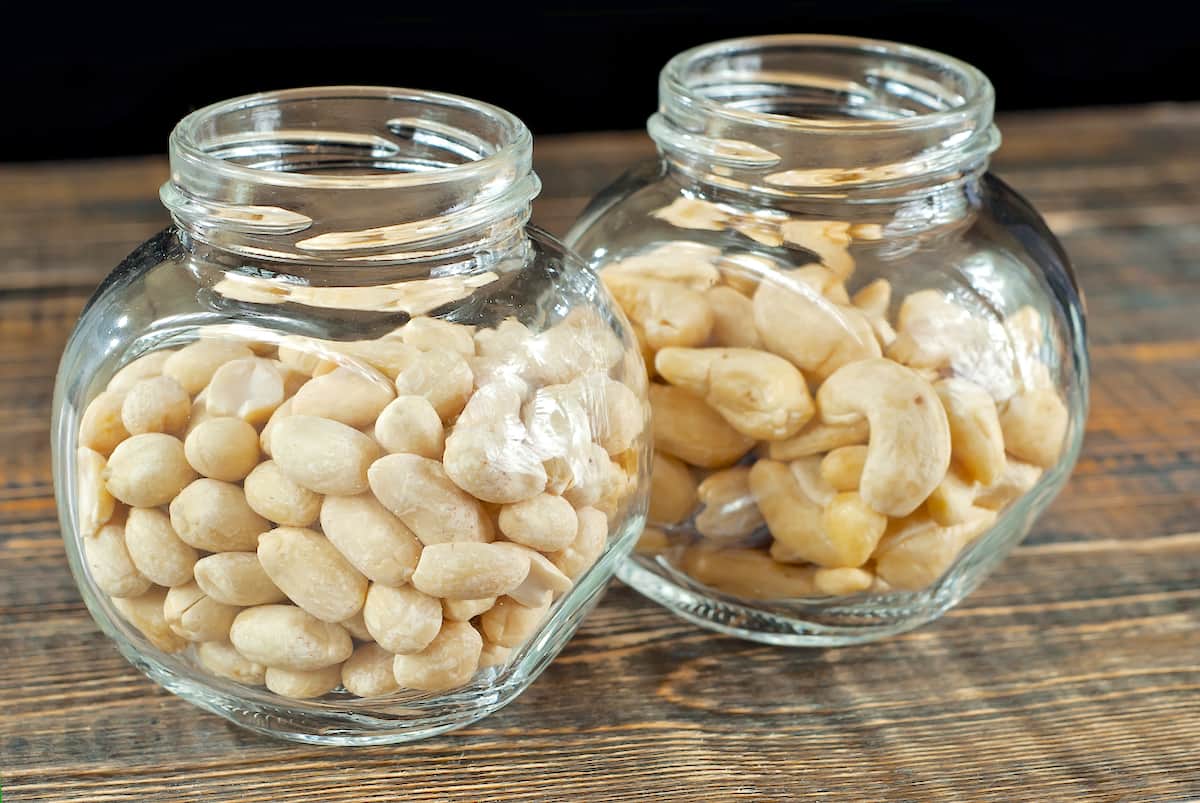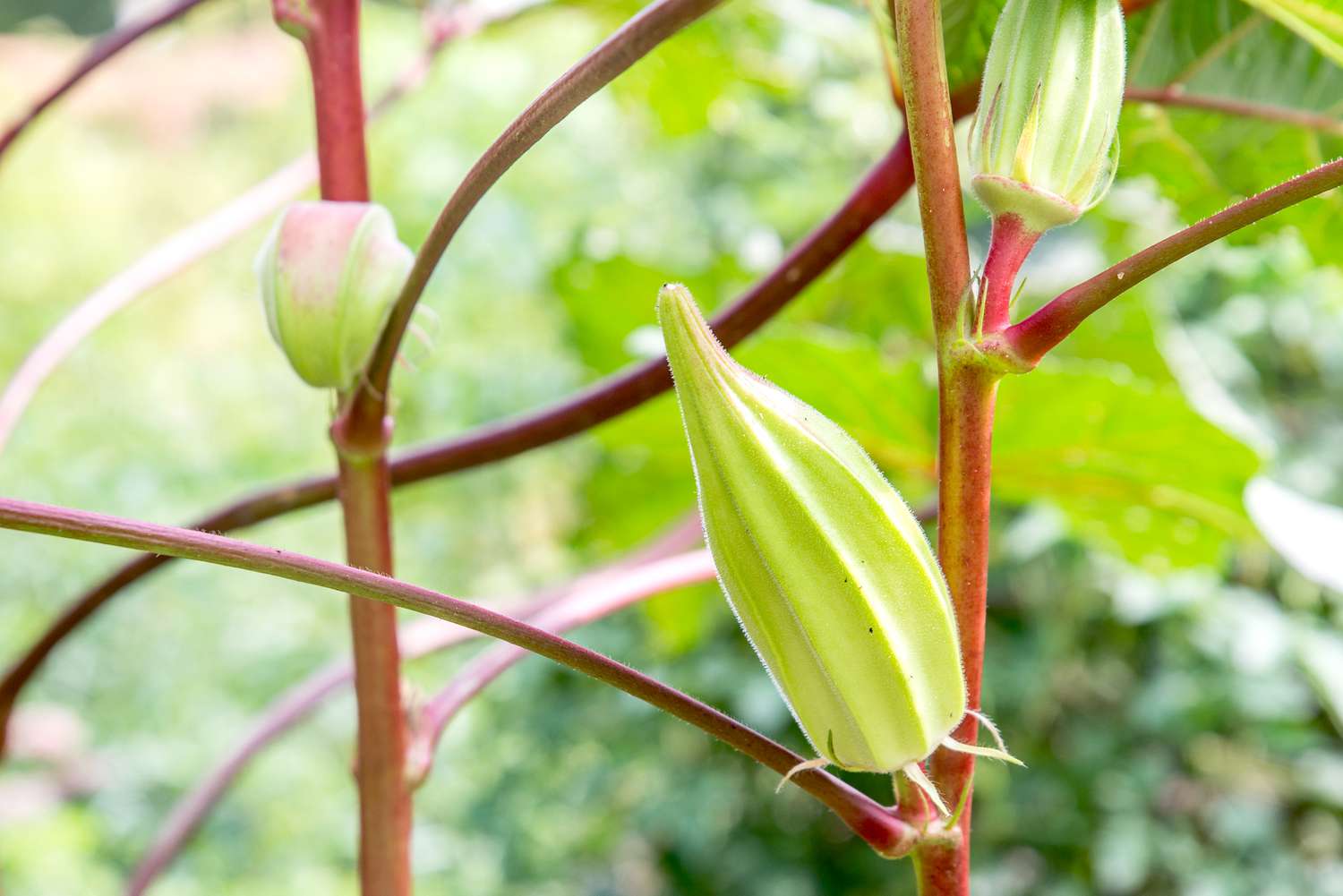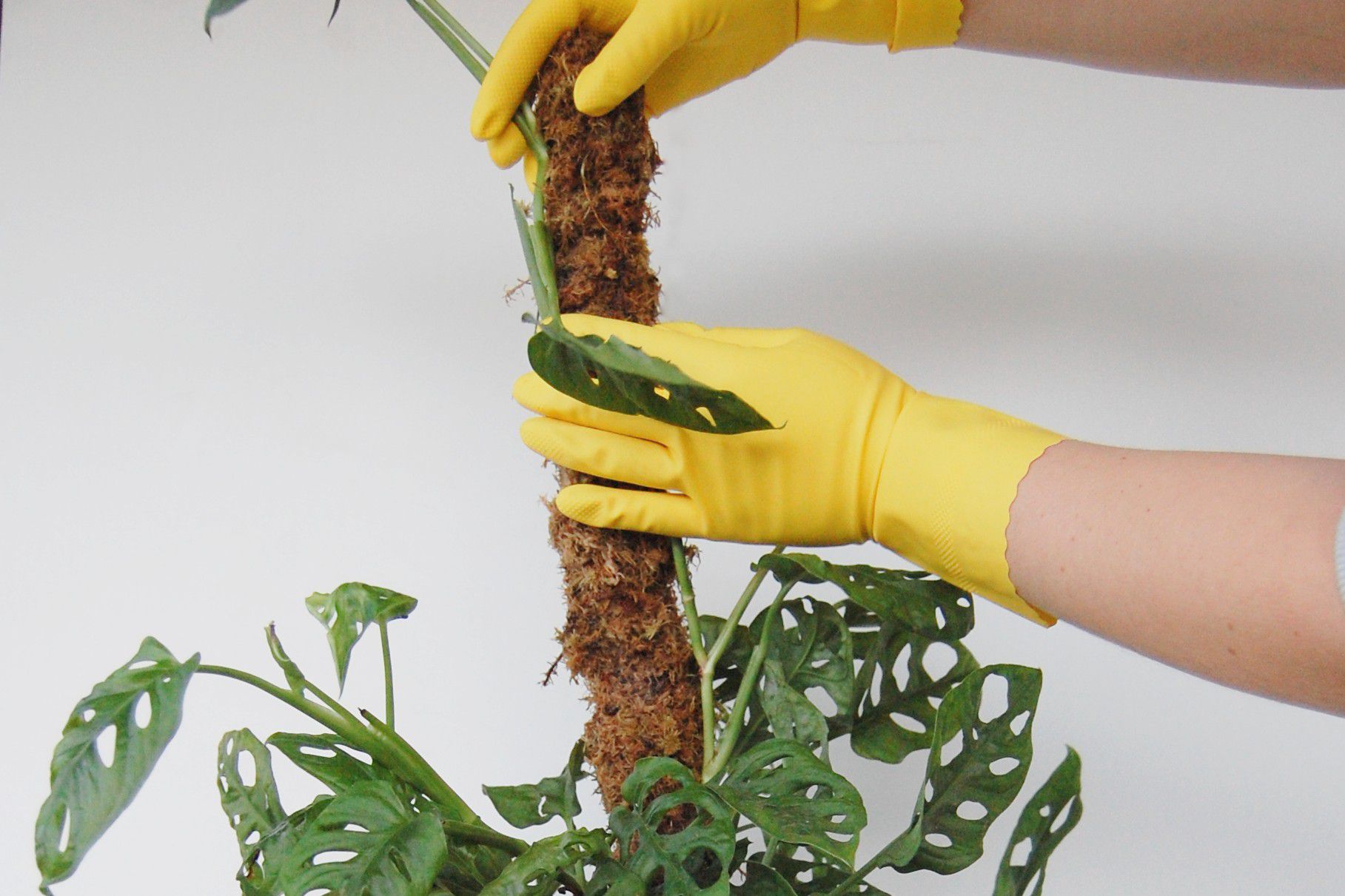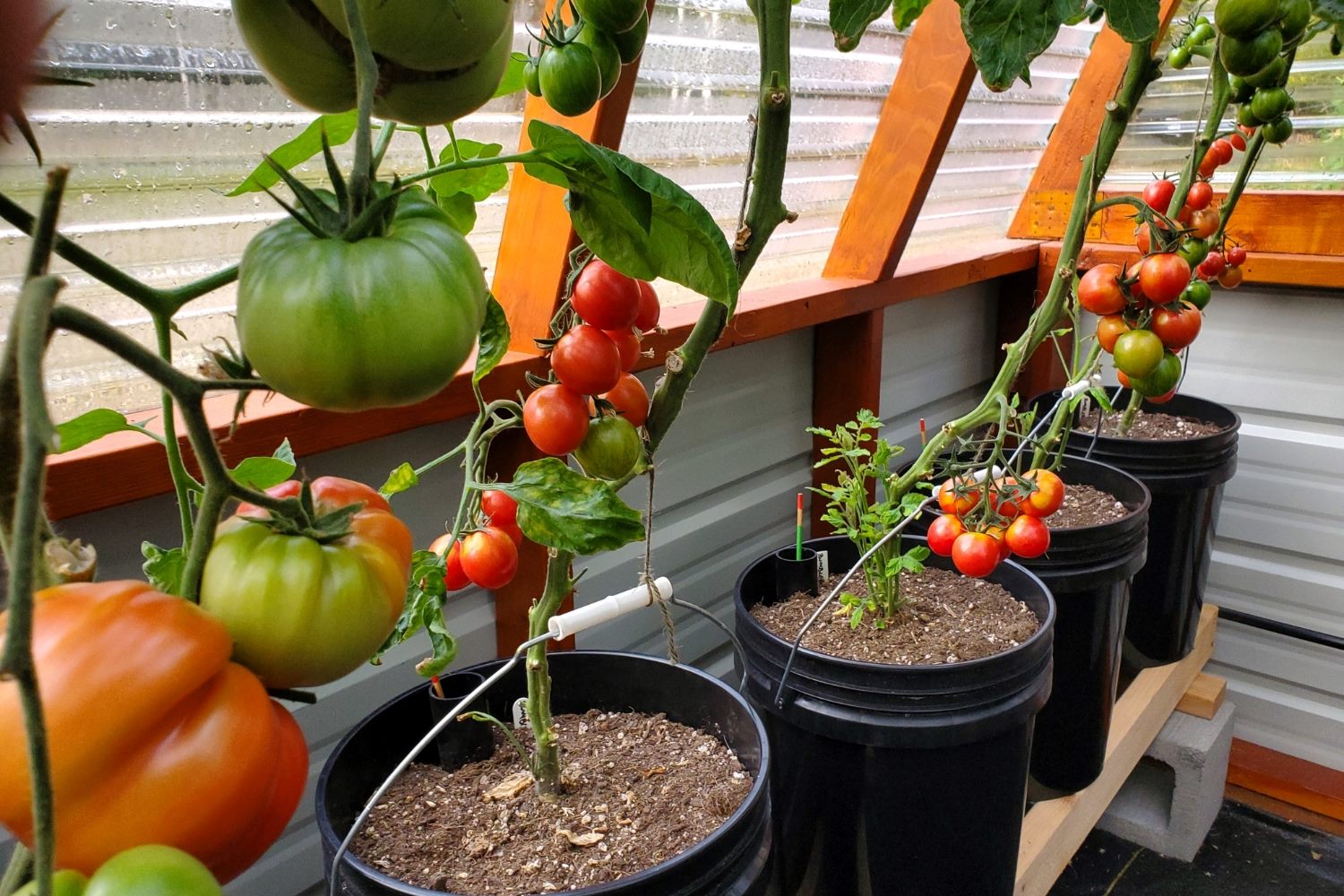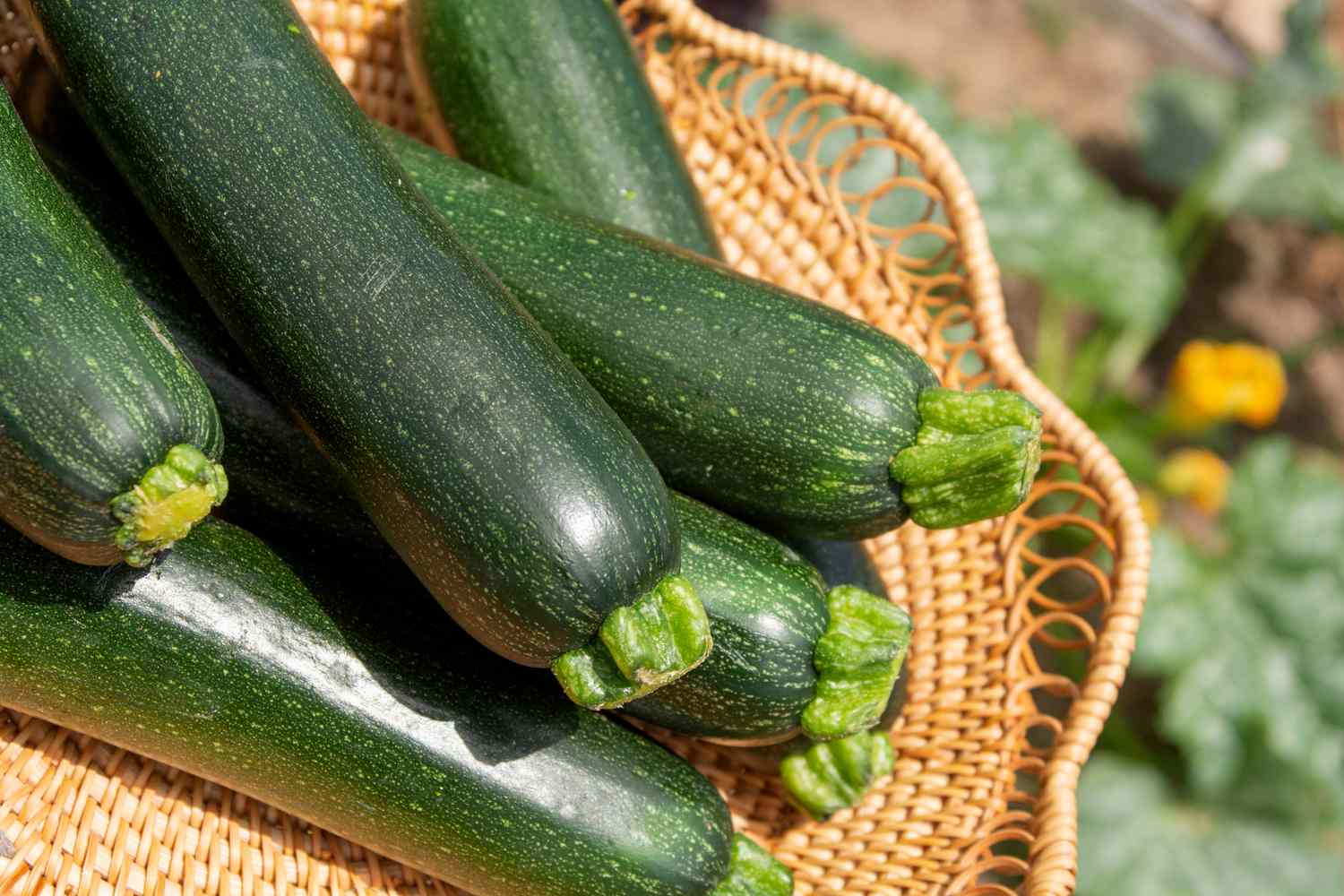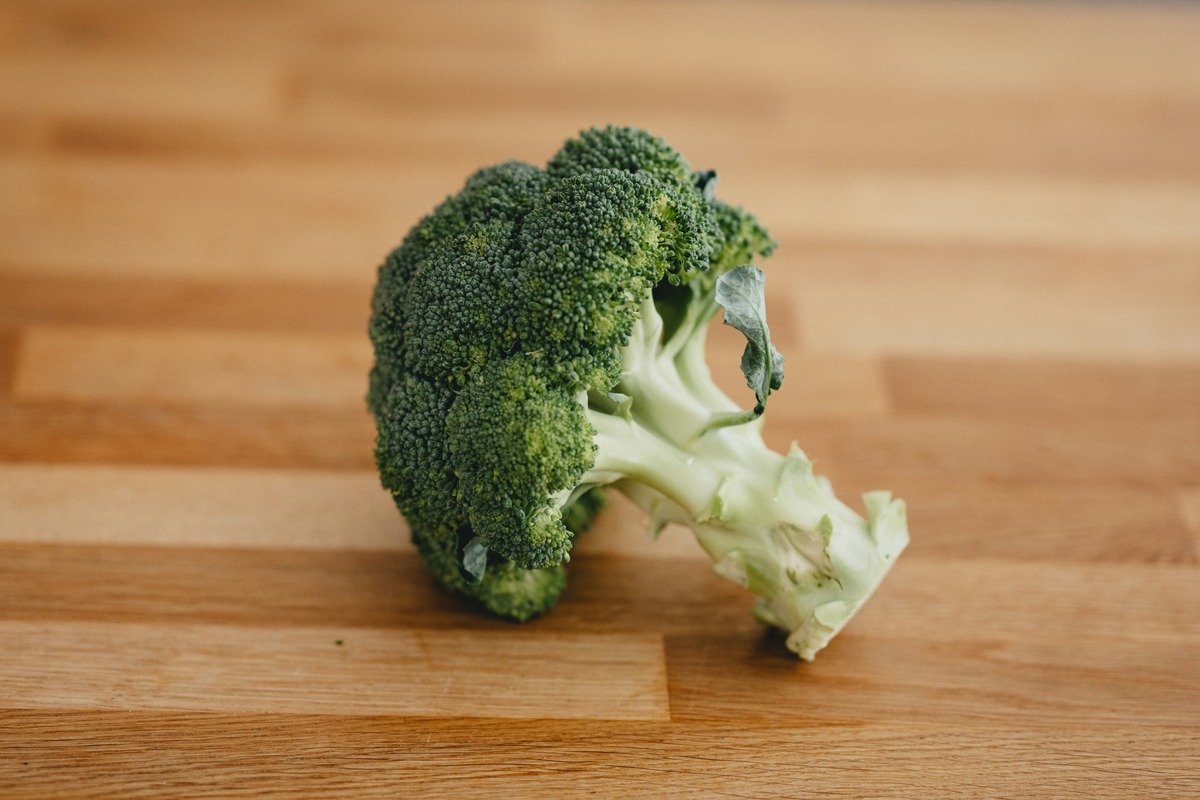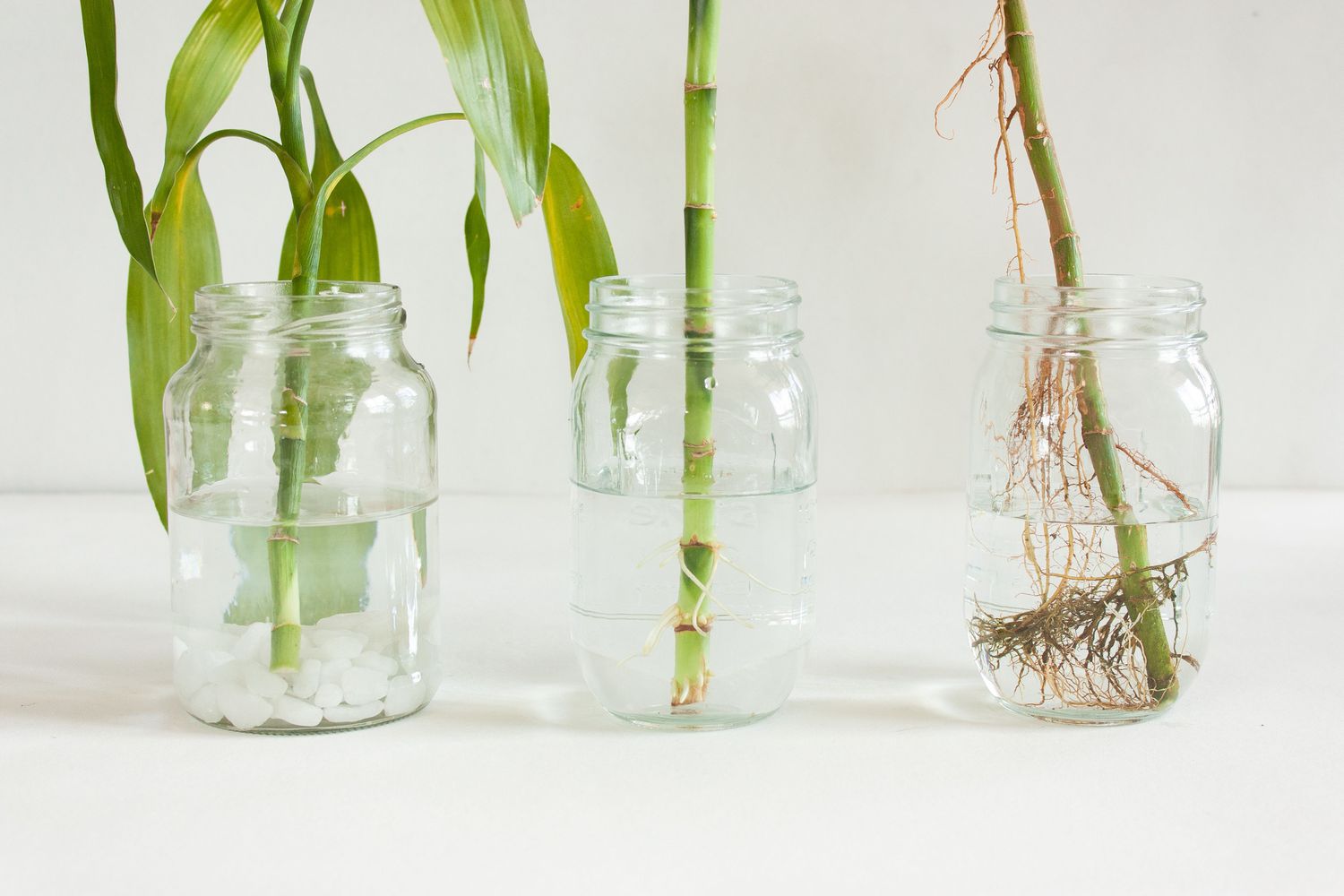Home>Home and Garden>How To Grow Peanuts
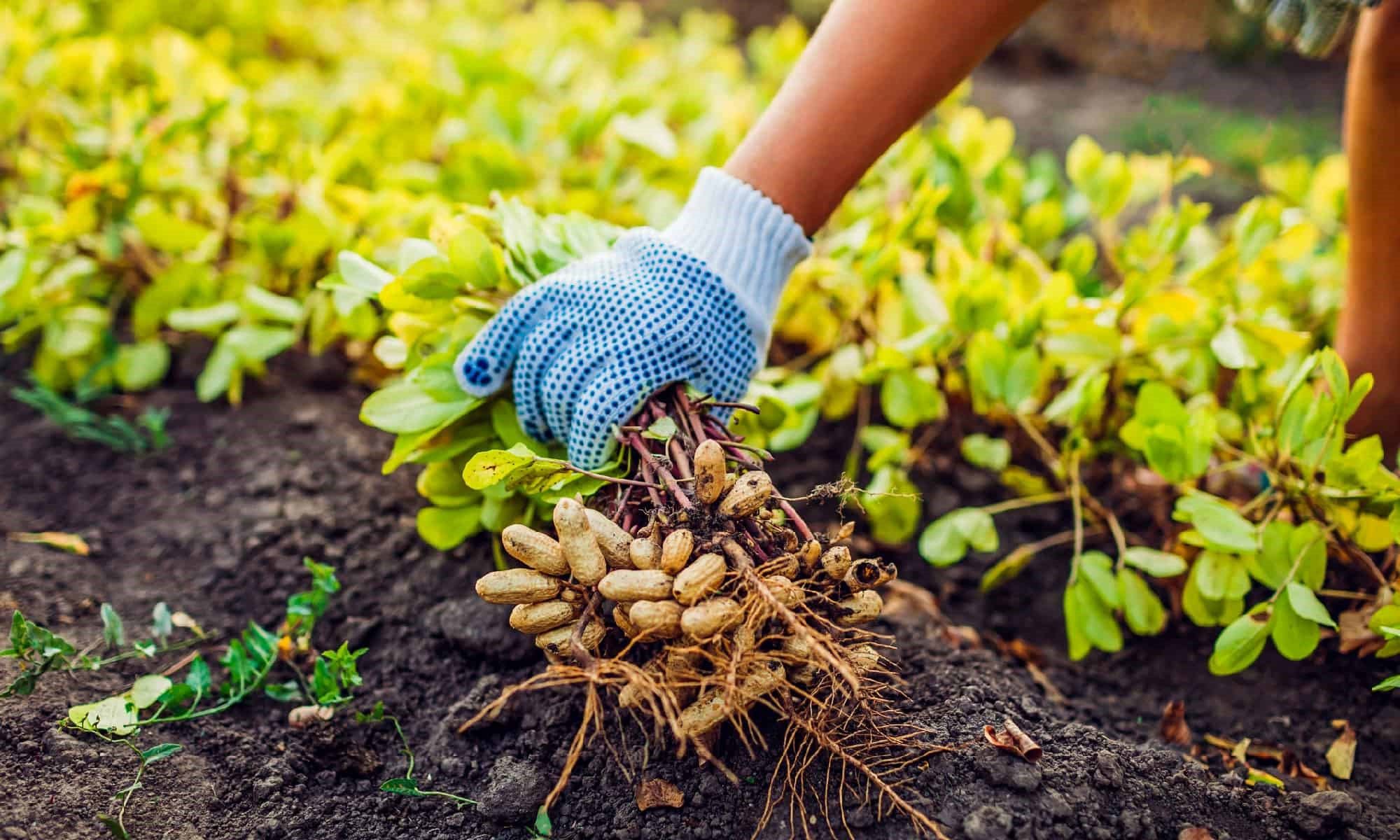

Home and Garden
How To Grow Peanuts
Published: March 3, 2024
Learn how to grow peanuts in your home garden with our comprehensive guide. Discover the best tips and techniques for a successful peanut harvest. Start growing your own peanuts today!
(Many of the links in this article redirect to a specific reviewed product. Your purchase of these products through affiliate links helps to generate commission for Noodls.com, at no extra cost. Learn more)
Table of Contents
Introduction
Peanuts, also known as groundnuts, are a versatile and nutritious legume that can be grown in a variety of climates. Whether you're a gardening enthusiast or simply curious about cultivating your own peanuts, this comprehensive guide will walk you through the process, from selecting the ideal location to harvesting and storing your homegrown peanuts.
Not only are peanuts a delicious and protein-packed snack, but they also play a crucial role in sustainable agriculture. By learning how to grow peanuts, you can contribute to your self-sufficiency and reduce your reliance on store-bought produce.
In this guide, we will delve into the essential steps for successfully growing peanuts, including choosing the right location, preparing the soil, planting, watering, fertilizing, managing pests and diseases, harvesting, and storing peanuts. By following these steps, you can embark on a rewarding journey of cultivating your own peanuts while reaping the numerous benefits they offer.
Now, let's dive into the details of each stage of peanut cultivation, equipping you with the knowledge and confidence to nurture your peanut plants from seed to harvest. Whether you have a spacious backyard or a small garden, growing peanuts can be a fulfilling and enjoyable experience that yields a bountiful harvest of this beloved legume.
Read more: How To Successfully Grow Onions
Choosing the Right Location
Selecting the optimal location for growing peanuts is a critical first step in ensuring a successful harvest. Peanuts thrive in warm climates with plenty of sunlight, so it's essential to choose a spot in your garden that receives full sun for the majority of the day. Aim for at least six to eight hours of direct sunlight to promote healthy growth and development of the peanut plants.
Additionally, it's important to consider the soil drainage in the chosen location. Peanuts require well-drained soil to prevent waterlogging, which can lead to root rot and other issues. Sandy loam soil is ideal for peanut cultivation, as it provides the necessary drainage while retaining sufficient moisture for the plants to thrive. Avoid areas with compacted or clay-heavy soil, as these conditions can impede root development and overall plant health.
Furthermore, when selecting the location for your peanut crop, take into account the potential for air circulation. Adequate airflow helps prevent the buildup of excess moisture, reducing the risk of fungal diseases that can impact peanut plants. Choosing a location with good air circulation can contribute to the overall health and vigor of your peanut crop.
In addition to sunlight, soil drainage, and air circulation, it's beneficial to consider the proximity of the chosen location to other plants in your garden. Peanuts are legumes that have the unique ability to fix nitrogen in the soil, enriching it for other plants. Therefore, integrating peanuts into a crop rotation plan can benefit the overall health of your garden and enhance the fertility of the soil for future plantings.
By carefully selecting a sunny, well-drained location with good air circulation for your peanut crop, you can lay a solid foundation for successful peanut cultivation. Taking the time to assess and choose the right location will set the stage for healthy plant growth and a bountiful peanut harvest.
Preparing the Soil
Preparing the soil is a crucial step in establishing the optimal growing conditions for peanuts. Before planting, it's essential to ensure that the soil is well-prepared to support the healthy development of peanut plants. Here's a detailed look at the key aspects of soil preparation for successful peanut cultivation.
Soil Testing
Before embarking on soil preparation, conducting a soil test can provide valuable insights into the soil's pH levels and nutrient composition. This information is instrumental in determining the specific amendments needed to optimize the soil for peanut cultivation. Most importantly, peanuts thrive in slightly acidic soil with a pH range of 5.8 to 6.2. If the soil pH deviates from this range, amendments such as lime or sulfur may be required to adjust the acidity levels accordingly.
Soil Structure and Texture
Peanuts flourish in well-drained, loose, and friable soil that allows for easy root penetration and development. Sandy loam soil is considered ideal for peanut cultivation, as it offers the right balance of drainage and moisture retention. To improve soil structure and texture, incorporating organic matter such as compost or well-rotted manure can enhance the soil's tilth and fertility. This organic amendment not only promotes aeration and drainage but also contributes to the overall nutrient content of the soil.
Read more: How To Grow A Mango Seed
Weed Control
Effective weed control is essential in preparing the soil for peanut planting. Clearing the designated area of weeds and unwanted vegetation helps minimize competition for nutrients, water, and sunlight, thereby creating a favorable environment for the peanut plants to thrive. Whether through manual removal or the application of organic mulch, maintaining a weed-free planting bed is crucial for the successful establishment of peanut crops.
Soil Preparation Techniques
Incorporating proper soil preparation techniques, such as tilling and leveling the planting area, ensures an even and well-aerated soil bed for peanut cultivation. Tilling the soil to a depth of 6 to 8 inches helps break up compacted soil, facilitates root growth, and promotes uniform seed placement during planting. Additionally, leveling the soil surface creates an optimal foundation for planting and subsequent crop management activities.
By meticulously addressing these aspects of soil preparation, you can create an environment that is conducive to the healthy growth and development of peanut plants. The careful attention to soil testing, structure, weed control, and preparation techniques sets the stage for a successful peanut crop, laying the groundwork for a rewarding harvest of homegrown peanuts.
Planting Peanuts
Planting peanuts marks a pivotal stage in the journey of cultivating these versatile legumes. The process of planting peanuts encompasses several key considerations, from selecting the right peanut variety to ensuring proper spacing and depth for optimal growth and development.
Selecting Peanut Varieties
When embarking on the planting phase, it's essential to choose peanut varieties that are well-suited to your specific growing region and climate. Different peanut varieties exhibit varying characteristics, including growth habits, disease resistance, and maturation periods. For instance, runner-type peanuts are known for their spreading growth habit, while Virginia-type peanuts tend to have a more upright growth pattern. By selecting the appropriate peanut variety, you can align your planting efforts with the unique environmental conditions and requirements of your garden or growing space.
Read more: How To Grow Sugar Cane Minecraft
Seed Preparation
Before planting, it's advisable to prepare the peanut seeds to enhance germination and establish strong, healthy plants. One common practice involves treating the seeds with a fungicide to protect against soil-borne diseases and promote seedling vigor. Additionally, soaking the seeds in water for several hours prior to planting can help expedite the germination process, ensuring a timely emergence of peanut plants.
Spacing and Depth
Proper spacing and planting depth are critical factors that contribute to the successful establishment of peanut plants. When planting peanuts, allow for approximately 10 to 12 inches between each seed in rows spaced 30 to 36 inches apart. This spacing accommodates the lateral spread of the peanut plants and facilitates optimal airflow, reducing the risk of disease and promoting healthy growth.
In terms of planting depth, aim to plant the peanut seeds at a depth of 1 to 2 inches in well-prepared soil. This depth provides the seeds with the necessary soil contact for germination while ensuring they are not planted too deeply, which could impede emergence. By adhering to the recommended spacing and planting depth, you can create an environment that fosters robust root development and vigorous growth throughout the peanut plant's lifecycle.
Planting Technique
When it comes to planting peanuts, the hill-drop method is commonly employed to achieve the desired spacing and depth. This technique involves creating small mounds or hills in the soil, with the peanut seeds placed at the center of each mound. The mounds not only facilitate proper drainage but also aid in maintaining the recommended planting depth for the seeds.
By meticulously addressing these aspects of planting peanuts, you can set the stage for the successful germination and establishment of peanut plants. The careful selection of peanut varieties, seed preparation, spacing, depth, and planting technique collectively contribute to creating an optimal environment for peanut growth, laying the groundwork for a thriving peanut crop.
Watering and Fertilizing
Watering and fertilizing are integral components of nurturing healthy peanut plants and promoting robust growth throughout the growing season. Proper irrigation and strategic fertilization practices play a crucial role in ensuring that peanut crops receive the essential moisture and nutrients needed to thrive in the garden or agricultural setting.
Read more: How To Make Mustache Grow Faster
Watering
Consistent and adequate moisture is essential for the successful cultivation of peanuts, particularly during critical growth stages such as flowering and pod development. While peanuts are relatively drought-tolerant, they require regular watering to support optimal plant health and yield potential.
When it comes to watering peanut plants, it's important to strike a balance between providing sufficient moisture and avoiding waterlogged conditions. Overly wet soil can lead to issues such as root rot and fungal diseases, underscoring the importance of maintaining proper soil moisture levels.
One effective approach to watering peanuts involves providing approximately 1 to 1.5 inches of water per week, either through rainfall or supplemental irrigation. Deep, infrequent watering is preferred over frequent shallow watering, as it encourages the development of deep root systems that can better withstand periods of dry weather.
During the critical flowering and pegging stages, consistent moisture is particularly crucial for promoting successful pod formation and development. By monitoring soil moisture levels and adjusting irrigation practices as needed, growers can support the healthy progression of peanut plants through key growth phases.
Fertilizing
In addition to adequate moisture, peanuts benefit from a balanced and targeted fertilization regimen that addresses their specific nutrient requirements. Fertilizers play a vital role in supplying essential nutrients such as nitrogen, phosphorus, and potassium, which are instrumental in supporting plant growth, flowering, and pod development.
Before planting, incorporating a balanced fertilizer with a higher phosphorus content can help provide the initial nutrient boost needed for strong root establishment and early growth. As the peanut plants progress through the growing season, a nitrogen-rich fertilizer can be applied to support vigorous foliage development and overall plant vitality.
Furthermore, the application of potassium-rich fertilizers can contribute to enhanced pod filling and quality, ultimately influencing the yield and nutritional value of the harvested peanuts. By tailoring the fertilizer application to the specific growth stages and nutrient demands of peanut plants, growers can optimize the overall health and productivity of their peanut crops.
By implementing a well-managed watering schedule and a targeted fertilization program, growers can provide the optimal growing conditions for their peanut plants, fostering robust growth and maximizing the yield potential of their homegrown peanut crop. These practices contribute to the overall success of peanut cultivation, ensuring that the plants receive the essential moisture and nutrients necessary for thriving in the garden or agricultural environment.
Managing Pests and Diseases
Managing pests and diseases is a critical aspect of cultivating healthy and productive peanut plants. By implementing proactive strategies and vigilant monitoring, growers can safeguard their peanut crops against potential threats and minimize the risk of yield loss due to pest infestations and disease outbreaks.
Pest Management
Peanuts are susceptible to various pests that can compromise plant health and diminish yield potential. Common pests that pose a threat to peanut crops include aphids, thrips, armyworms, and nematodes. Implementing integrated pest management (IPM) practices is essential for effectively controlling pest populations while minimizing the use of chemical pesticides.
One key component of pest management involves regular scouting and monitoring of the peanut plants for signs of pest activity. Early detection allows growers to intervene promptly and implement targeted control measures, such as the application of beneficial insect predators or the use of insecticidal soaps to mitigate pest populations.
Furthermore, employing cultural practices, such as crop rotation and the removal of crop debris, can help disrupt pest life cycles and reduce the buildup of pest populations. Additionally, selecting pest-resistant peanut varieties can provide a proactive defense against common pests, contributing to overall crop protection and resilience.
Read more: How To Grow Mangrove Trees Minecraft
Disease Prevention
Disease prevention is equally crucial in maintaining the health and vigor of peanut plants throughout the growing season. Peanuts are susceptible to fungal diseases such as early and late leaf spot, as well as viral diseases like peanut mottle virus and tomato spotted wilt virus. Implementing preventive measures is essential for minimizing the impact of these diseases on the crop.
One effective strategy for disease prevention involves promoting good air circulation around the peanut plants, as proper airflow can help reduce humidity levels and inhibit the development and spread of fungal diseases. Additionally, avoiding overhead irrigation and opting for drip or furrow irrigation can help minimize moisture on the foliage, creating an environment less conducive to disease development.
Utilizing disease-resistant peanut varieties can significantly contribute to disease management, as these varieties possess genetic traits that confer heightened resistance to specific pathogens. By selecting resistant varieties, growers can proactively mitigate the risk of disease outbreaks and reduce the reliance on chemical fungicides.
Integrated Approach
An integrated approach that combines cultural, biological, and chemical control methods is instrumental in effectively managing pests and diseases in peanut crops. By integrating pest-resistant varieties, cultural practices, biological controls, and targeted pesticide applications when necessary, growers can establish a comprehensive pest and disease management strategy that promotes the long-term health and productivity of their peanut plants.
By prioritizing proactive pest and disease management, growers can cultivate resilient peanut crops that are better equipped to withstand potential threats and thrive throughout the growing season. Implementing a holistic approach to pest and disease management not only safeguards the current crop but also contributes to the sustainability and success of future peanut plantings.
Harvesting Peanuts
Harvesting peanuts is a culmination of the meticulous care and attention invested in nurturing the peanut plants throughout their growth cycle. As the plants progress through the maturation process, it becomes essential to identify the optimal timing for harvesting to ensure the highest quality and yield of peanuts.
One of the key indicators of peanut readiness for harvesting is the progression of the plant's growth and development. As the peanut plants reach maturity, the foliage begins to yellow and the pegs, which are the structures that develop into peanuts, start to penetrate the soil. This stage, known as peg penetration, signifies that the peanuts are nearing readiness for harvest.
When the majority of the pegs have penetrated the soil and the plant foliage has transitioned to a yellowish hue, it is time to initiate the harvesting process. Carefully excavating a few peanut pods from the soil can provide insight into the readiness of the crop. Mature peanuts typically exhibit a firm texture and a developed kernel inside the pod, indicating that they are primed for harvesting.
To begin the harvesting process, carefully loosen the soil around the peanut plants using a digging fork or similar tool, taking care to avoid damaging the pods. Gently lift the plants from the soil, shaking off excess dirt and debris to reveal the attached peanuts. It is important to handle the plants with care to prevent any damage to the pods and ensure the preservation of the harvested peanuts' quality.
Following the extraction of the peanut plants from the soil, the next step involves allowing the peanuts to air-dry for a period of 7 to 10 days. This curing process is crucial for enhancing the flavor and quality of the peanuts while promoting the development of their characteristic crunchy texture. After the curing period, the peanuts can be further processed by removing the pods and storing the kernels in a cool, dry environment.
Harvested peanuts can be enjoyed in their raw form, roasted to perfection, or utilized in a myriad of culinary applications, from savory dishes to delectable peanut butter. The satisfaction of harvesting and savoring homegrown peanuts serves as a testament to the rewards of dedicated cultivation and the joy of reaping the fruits of one's labor.
By adhering to the cues of plant maturity, exercising care during the harvesting process, and allowing for proper curing, growers can harvest a bounty of flavorful and nutritious peanuts, showcasing the culmination of their efforts in cultivating this beloved legume.
Storing and Using Peanuts
Once the peanuts have been harvested and cured, proper storage is essential to maintain their quality and flavor for an extended period. Whether you plan to enjoy the peanuts as a wholesome snack or incorporate them into various culinary creations, following best practices for storage ensures that the homegrown peanuts retain their freshness and nutritional value.
Read more: How To Grow Orange Seeds
Storing Peanuts
After the curing process, it's crucial to store the peanuts in a cool, dry environment to preserve their flavor and texture. Ideally, the storage area should maintain a consistent temperature of around 50 to 70 degrees Fahrenheit, with low humidity levels to prevent moisture-related issues. A well-ventilated space, such as a pantry or cellar, provides an optimal storage environment for peanuts.
To protect the peanuts from exposure to light and air, consider storing them in breathable containers such as mesh bags or woven baskets. Avoid using airtight containers, as peanuts require some airflow to prevent the development of mold or mildew. Additionally, it's advisable to keep the peanuts away from strong-smelling foods, as they can absorb odors easily.
Using Peanuts
Homegrown peanuts offer a versatile ingredient for a wide range of culinary applications, from savory dishes to delectable desserts. Roasting the peanuts enhances their natural flavor and creates a delightful crunch, making them an irresistible snack on their own. Furthermore, peanuts can be used to prepare homemade peanut butter, adding a wholesome touch to sandwiches, smoothies, and baked goods.
In savory cooking, peanuts can be incorporated into stir-fries, salads, and sauces, imparting a rich, nutty flavor and a satisfying crunch. Ground peanuts can also be used as a flavorful coating for meats or as a garnish for soups and stews, adding depth and texture to the dishes.
For those with a sweet tooth, peanuts can be transformed into delectable treats such as peanut brittle, cookies, and chocolate-covered peanut clusters. The versatility of peanuts in the kitchen allows for endless creativity, making them a valuable addition to any culinary repertoire.
By storing homegrown peanuts in a suitable environment and exploring the diverse ways to use them in cooking and snacking, growers can fully appreciate the rewards of their peanut harvest. Whether enjoyed as a wholesome snack or incorporated into culinary creations, homegrown peanuts offer a delightful and nutritious addition to the dining table, showcasing the satisfaction of cultivating and utilizing this beloved legume.
